Two Stories: Reality and Consciousness by Flora Shi
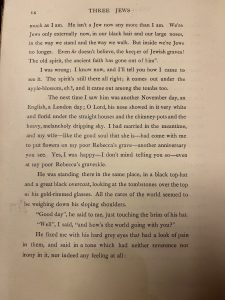
Irregular Spacing
Two Stories is an old and thin book, consisting of only 32 pages with a linen cover of red and white geometric patterns. As the first book written and printed by Virginia Woolf and Leonard Woolf through the Hogarth Press in 1917, the object is amateurish with its irregular spacing, blurry print, and smudged ink dots. In contrast to its unassuming appearance, the stories included in this book, along with the corrections on the margin, give us important hints about how Virginia Woolf perfected her modernist style.
As suggested by the title, the book contains two stories: “Three Jews” by Leonard Woolf and “The Mark on the Wall” by Virginia Woolf. “Three Jews” is a discussion on Jewish traditions, describing a conversation between two Palestinians when they stroll in Kew Garden, surrounded by happy English people. As the conversation unfolds, one of them recalls the story of another Palestinian in London, who works as a cemetery keeper and disowns his son after discovering that his son marries a Christian woman. The story is very realistic, utilizing solid, materialist details to construct an objective world. Conversely, “The Mark on the Wall” employs a stream-of-consciousness style. In the story, the narrator sits in her living room and catches sight of a black mark on the wall. The possible identity of the mark provokes a sequence of thoughts from the narrator, in which she contemplates the nature of reality, knowledge, modern civilization, and the ongoing war. Whenever her thoughts become unpleasant, the mark on the wall brings her back to reality. The pairing of these two stories highlights the innovation and experimentalism in Virginia’s style. While “Three Jews” anchors the readers in a conventional, realistic narrative, “The Mark on the Wall” impresses them with an individual’s inner world that is filled with random, spontaneous, and inconsequential reflections.
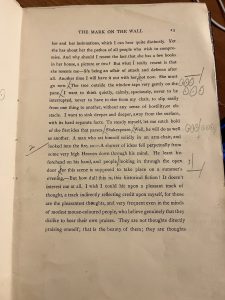
Edits on Page 23
Compared to the final version we read in class, “The Mark on the Wall” in this object is the first edition that includes many corrections from Virginia Woolf. The most pronounced change is in syntax and punctuation, where she frequently broke a long sentence into fragments by adding commas and dashes. Moreover, many periods were replaced by ellipses. One example occurs on page 23: the sentence “To steady myself, let me catch hold of the first idea that passes. Shakespeare. Well, he will do as well as another” was changed to “To steady myself, let me catch hold of the first idea that passes…. Shakespeare….Well, he will do as well as another”. A period signifies the completion of a sentence, while an ellipsis is often used to indicate the omission of words or to suggest an incomplete idea. With the use of a period, the thought of the narrator seems very definite and fluent, without hesitation or mind-wandering. The change to ellipsis slows down and adds more uncertainty to her thinking process. The narrator’s mind might jump to other topics during the ellipsis and the choice of Shakespeare might just be an inspiration from a fleeting idea. These corrections demonstrate how Virginia Woolf experimented with syntax to mimic the twists and turns of human consciousness.
Another distinct change is the omission of the discussion on a female housekeeper. In Two Stories, after commenting on herself as “not being a very vigilant house-keeper”, the narrator recalls the mutual resentment between her and another housekeeper, “a woman with a broom in her hand, a thumb on picture frames, an eye under beds”. The thought of this housekeeper is so menacing that the narrator has to focus on the mark or switch to examine the tree outside the window. This discussion suggests that instead of wishing to be a better housekeeper, the narrator feels trapped and menaced by the conventional gender expectations that contradict her reality. It is rather surprising that Virginia Woolf removed this piece in the final edition as she is often regarded as a seminal feminist writer. The removal might be intended to introduce more interruptions to continuous thoughts in the story or to blur the commentary on gender.
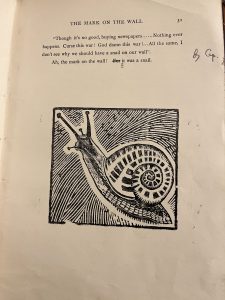
The Snail
Besides the two stories, this object contains four woodcut illustrations by Dora Carrington. For “Three Jews”, the images depict the Palestinian stroller talking to the Jewish cemetery keeper and the Christian woman serving the cemetery keeper’s house. For “The Mark on the Wall”, the first illustration is the narrator sitting in the living room with her dog and looking into the fire, while the second reveals the identity of the mark on the wall–a snail. The picture of the snail creates a sense of irony because all the profound reflections of the narrator are provoked by something as trivial as a snail. Resonating with the stream-of-consciousness style, the snail conveys the message that objective details presented by everyday reality do not have intrinsic meaning or value. Rather, it is the reflections and musings upon these details that bring meaning to human existence.


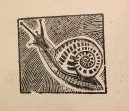

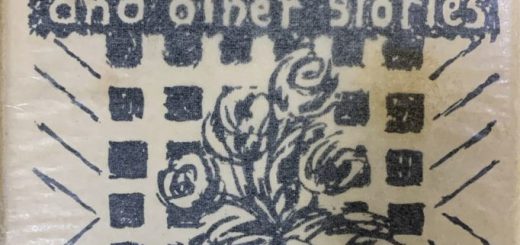
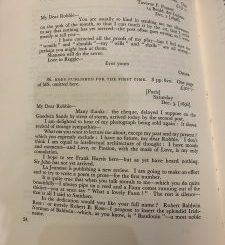




Recent Comments